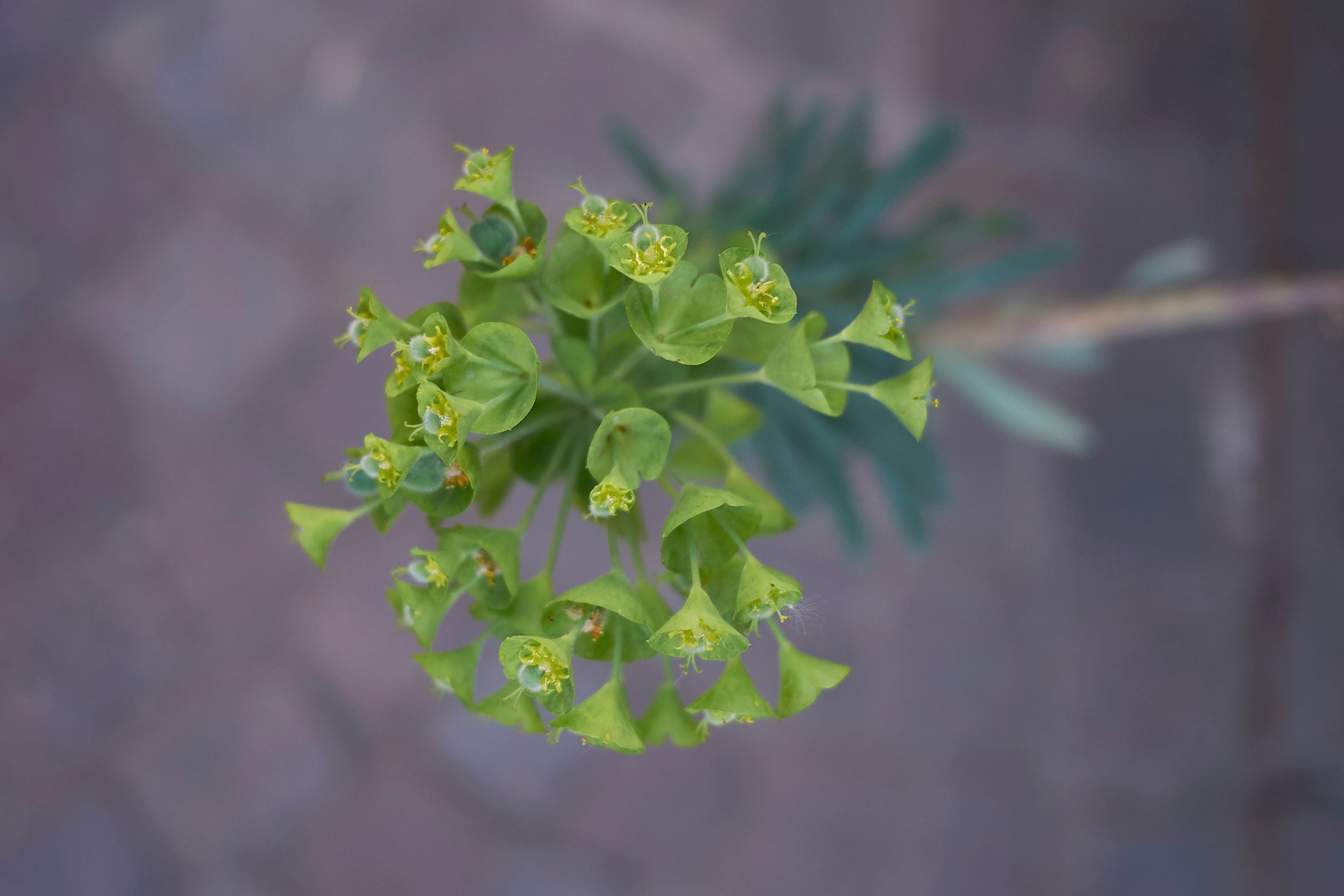Spurge
(Euphorbia characias)

Description
Euphorbia characias is a species of flowering plant in the family Euphorbiaceae. It is native to the Mediterranean region, including southern Europe and northern Africa. This plant is commonly known as the Mediterranean spurge or simply as the spurge. In this article, we will explore the characteristics, growing conditions, uses, and potential health hazards associated with Euphorbia characias. Taxonomy Euphorbia characias belongs to the genus Euphorbia, which is a large and diverse group of plants with over 2,000 species. The genus name Euphorbia is derived from Euphorbus, who was the physician to the King of Mauretania. Euphorbia characias was first described by Carl Linnaeus in 1753 in his book Species Plantarum. Characteristics Euphorbia characias is an evergreen perennial plant that grows up to 1.5 meters (5 feet) tall and 1 meter (3 feet) wide. The stems are erect, green, and slightly woody at the base. The leaves are arranged in a rosette at the base of the plant, and are oblong, slightly curved, and up to 25 centimeters (10 inches) long. The flowers are small, yellow-green, and clustered in dense umbels at the tips of the stems. The plant blooms from late winter to early summer. Growing Conditions Euphorbia characias is a hardy plant that can grow in a wide range of conditions. It prefers well-drained soil and full sun, but can also tolerate partial shade. It is drought tolerant and can survive in areas with low water availability. The plant is not frost tolerant and can be damaged by temperatures below -5°C (23°F). Propagation Euphorbia characias can be propagated from seeds, cuttings, or division. The seeds should be sown in the fall or early spring in well-drained soil. The cuttings should be taken in late spring or early summer and should be about 10 centimeters (4 inches) long. The division should be done in the fall or early spring when the plant is dormant. Uses Euphorbia characias is a popular ornamental plant because of its attractive foliage and flowers. It is often used as a border plant, in rock gardens, or as a specimen plant in a mixed border. The plant is also used in traditional medicine for the treatment of various ailments. The latex from the plant is used to treat warts, corns, and other skin conditions. However, the use of the latex should be done with caution as it can cause skin irritation and other health problems. Health Hazards Euphorbia characias is known to produce a milky latex that can cause skin irritation, eye irritation, and other health problems. The latex contains a variety of toxic compounds, including diterpenoids, phorbol esters, and ingenol esters. These compounds can cause severe skin inflammation, blistering, and other health problems. The latex can also cause severe eye irritation and should not be handled without protective equipment. Conclusion Euphorbia characias is a beautiful and hardy plant that is easy to grow and maintain. It is a popular ornamental plant that can be used in a variety of landscaping situations. However, it is important to handle the plant with care and avoid contact with the milky latex. The latex can cause severe skin and eye irritation and can be toxic if ingested. As with all plants, it is important to be aware of the potential health hazards associated with Euphorbia characias and to take appropriate precautions when handling the plant.
Taxonomic tree:







